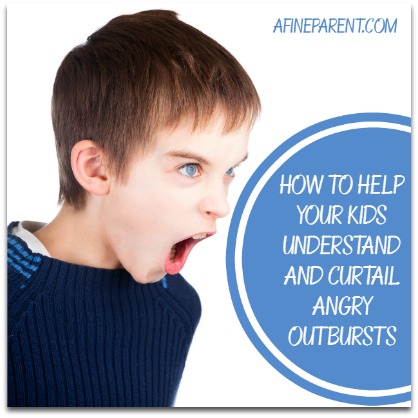 Have your kids ever screamed at you in total, uncontrolled anger?
Have your kids ever screamed at you in total, uncontrolled anger?
Pretty much every mom I know has had this experience – some more than others – and still, every time we experience it, it still feels as raw as the first time it happened.
I recently had a mother pose the situation of her eight-year-old son who was having difficulty with anger. This had motivated her to ask for ways to help him. It usually happened when he didn’t get his way. This would cause him to lose control and was even affecting his ability to make friends.
Reflecting on her question took me back to when my kids were young, remembering how easy it was to respond to such outbursts with my own anger, especially when the outbursts continued.
In trying to find something that would help, I thought first about his age and stage of development. At eight, he is old enough to learn to recognize when he is experiencing anger, and that is probably the best place to begin. However, if temper tantrums had worked when he was young, they could also have become a learned response.
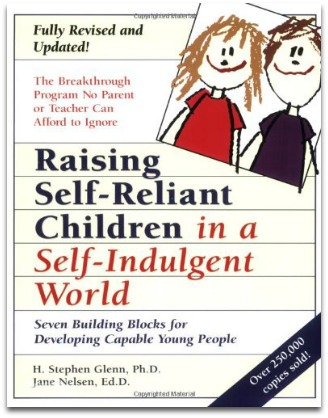 Another reason for consistent outbursts of anger could be that her son may have experienced the feeling that he has no control over a situation. In Raising Self-Reliant Children in a Self-Indulgent World by Stephen Glenn and Jane Nelsen, Ed.D. we learn it is a human need to feel as if we can influence what happens to us. When kids have no way of ever feeling empowered and are always frustrated in their requests, anger builds up.
Another reason for consistent outbursts of anger could be that her son may have experienced the feeling that he has no control over a situation. In Raising Self-Reliant Children in a Self-Indulgent World by Stephen Glenn and Jane Nelsen, Ed.D. we learn it is a human need to feel as if we can influence what happens to us. When kids have no way of ever feeling empowered and are always frustrated in their requests, anger builds up.
Finding ways to honor those feelings may resolve the anger problem. Giving choices when appropriate or asking for a child’s advice in handling a situation and following through with it, when possible, goes a long way to instill the idea that, “I have influence.”
If you can’t use the suggestion itself, use it as a springboard for looking for a solution that you come up with together. I’m always amazed at the wisdom of kids if we take time to ask.
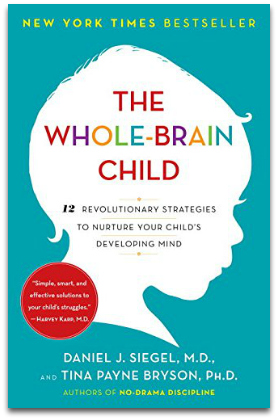 The Whole-Brain Child by Daniel Siegel, M.D. and Tina Payne Bryson, Ph.D. is one of the most helpful books I know of to help us understand anger.
The Whole-Brain Child by Daniel Siegel, M.D. and Tina Payne Bryson, Ph.D. is one of the most helpful books I know of to help us understand anger.
They write of the Upstairs Brain and the Downstairs Brain. The upstairs brain is where rational thinking kicks in; the downstairs brain keeps us tied to emotional responses.
One of the tools they suggest to help our kids move from downstairs to upstairs is the simple act of giving an emotion a name and retelling the story of what caused it to surface. In doing this, kids are better able to understand what has upset them and find ways to handle it. This “Name it to Tame it” tool is the beginning of helping your child understand and handle their emotions, allowing them to devise strategies on their own for improving the situation.
Helping your child learn to say, “I’m angry” or “I’m mad at you” instead of “I hate you” or “You make me upset” is a good beginning. Not only are they giving their feelings a name, but they are not blaming someone else for those feelings, which happens with, “You make me upset.”
This is an important concept to learn when young. Otherwise, we often carry the instinct to blame into adulthood. How many times has the thought crossed your mind with the words, “You make me so mad!” as if that other person were in charge of your emotions. We need to help our kids take ownership of how they feel whether those feelings are good or bad.
If your child articulates, “I’m mad at you,” an appropriate adult response would be, “I can tell that you are really upset. Tell me what I did that made you so mad.”
You may already know, however, for a child of eight, it is important that they learn to put it into words. For a younger child, words like, “I can tell you don’t want to leave and it’s making you very upset” may be needed.
Either way, they are starting to tell the story of what is causing the upset.
The above acknowledges the child’s feelings instead of denying them. It is important that children learn in their early years that it is okay to feel angry. They need to know that all emotions are acceptable, however, all behaviors are not. Our goal as parents is to help them express emotions with behaviors that are appropriate.
Help your child understand the reasons behind their anger
 The ability to tell you why they are so upset may not be possible, and your child may need some help. Interjecting, “I’m thinking that you really want to play outside right now and my saying ‘No’ is what has you so upset. I can understand how that would make you mad. Why do you think I’ve said ‘No’ to going out?” may be all that’s needed to get the conversation going.
The ability to tell you why they are so upset may not be possible, and your child may need some help. Interjecting, “I’m thinking that you really want to play outside right now and my saying ‘No’ is what has you so upset. I can understand how that would make you mad. Why do you think I’ve said ‘No’ to going out?” may be all that’s needed to get the conversation going.
Notice that the above avoided “Yes” and “No” questions; instead, try using open-ended questions that require some thought. It also expresses empathy and validation that show you understand why they are upset and validates the realness of their feelings. This does not mean you need to give in or change your decision.
At this point, you may want to share again why it’s not a good time to play outside or ask your child if they can think of something else they might do since going outside is not possible.
Reflective listening skills help convey your understanding. An appropriate goal for an eight-year-old is for them to be able to reason out why something is being denied and to come up with a solution on their own. How easy it is for us, the parent, to tell them what to do or how they should feel, and that does little to move them into using their upstairs brain. I know for me this was always a struggle and a habit hard to break.
For the younger child who is throwing a tantrum about leaving the park (or whatever has them engaged) say, “I’m sorry. I know it’s hard to stop. It’s time to go. Remember, we’ll be coming back tomorrow.” At this point, stop talking, pick them up and head to the car, no matter if the noise continues.
It’s sometimes hard to be persistent, however, important. Keep in mind the adage “never argue with a drunk, especially a toddler (or anyone) drunk on power.” And giving-in when their young reinforces the idea that tantrums work which can haunt you well into an older age. That doesn’t mean we should never be flexible. It’s just that it’s not a good idea if a tantrum is involved.
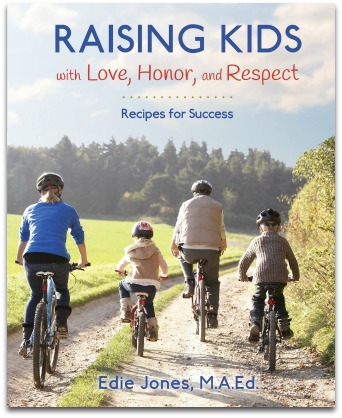 When anger possesses a person (young or old) it’s easy to lose perspective. When someone is angry, it is difficult to reach him or her through feelings or reason. This applies to adults as well as kids and makes it a good time to back off, allowing time to help. Saying, “Come see me when you’re finished with your fit and can talk in a nicer way” and walking away may often bring the tirade to a quicker end. This is also the time to put a time-out into practice. In my book Raising Kids With Love, Honor and Respect; Recipes for Success you will find many different ways to employ a time-out. Remember, if one way doesn’t work, try another. Why keep doing what you know doesn’t bring the results you want?
When anger possesses a person (young or old) it’s easy to lose perspective. When someone is angry, it is difficult to reach him or her through feelings or reason. This applies to adults as well as kids and makes it a good time to back off, allowing time to help. Saying, “Come see me when you’re finished with your fit and can talk in a nicer way” and walking away may often bring the tirade to a quicker end. This is also the time to put a time-out into practice. In my book Raising Kids With Love, Honor and Respect; Recipes for Success you will find many different ways to employ a time-out. Remember, if one way doesn’t work, try another. Why keep doing what you know doesn’t bring the results you want?
Because the ability to regulate the expression of anger is linked to an understanding of why they are angry, children need guidance from adults first in understanding why they are upset and then in learning how to manage their feelings of anger. By eight, both of these are possible, so don’t give-up. If angry outbursts are causing your kids to lose friends, they need help. That’s our job, to help them learn to both understand and to manage their feelings, not deny them.
When adults help children move through frustration, acknowledging it and the feelings that accompany it, it is possible for the kids to move on and adapt. Do this by:
- Asking questions that allow a child to offload and express emotions, to ensure he or she feels heard and understood.
- Use questions that keep kids talking, moving toward solutions, gently helping them understand their reasons for being disappointed. I know, this is hard (how well I remember) especially when they just get louder and louder.
- Lower your voice, almost to a whisper, and reiterate that you’ll listen when they can tell you in a quieter way why they are angry. Again, this doesn’t mean you’re going to change your mind or give-in. It only means you want to hear what they have to say.
- Use guidance to help kids express anger appropriately. Teach words they can use to help them feel they have some control over the situation:
- An eight-year-old can memorize and repeat to himself, “I can take care of myself, I can take care of myself, I can take care of myself”, etc.)
- Counting: “10, I’m okay. 9, I’m okay. 8, I’m okay. 7, I’m okay”, etc.
- Teach the ABCs of anger (Become Aware, I am angry. Breathe, Count to 10. Learn to go outside and scream, sock a pillow, run in circles, etc.) This tool was originated by Birth to Three, in Eugene, Oregon as a tool for parents when they feel they are going to lose it. The same can work for kids from about 4 on.
Become an emotion coach
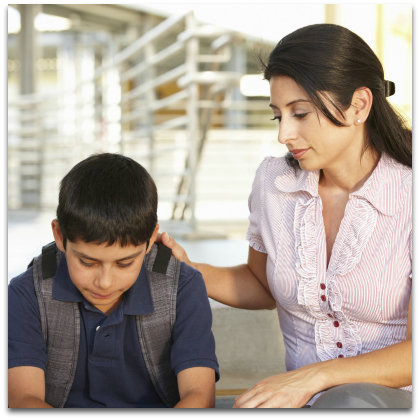 When you help a child deal with anger in the above ways, you are acting as an emotion coach. We’re all familiar with how good athletic coaches help their athletes become the best they can be; it’s through encouragement, guidance, patience, and understanding the needs of each player. Most likely many of you have been in those roles innumerable times.
When you help a child deal with anger in the above ways, you are acting as an emotion coach. We’re all familiar with how good athletic coaches help their athletes become the best they can be; it’s through encouragement, guidance, patience, and understanding the needs of each player. Most likely many of you have been in those roles innumerable times.
An emotion coach operates in much the same way as an athletic coach so draw on the skills you already use. As I mentioned earlier, a parent’s most important tools are empathy and validation, showing you understand why your child is upset and validating the realness of his or her feelings. Following are some tools to help you do this.
- Help your children recognize and accept their feelings. Talk with them about feelings. Describe what you think they are feeling, positive and negative:
- “I can see you are very upset about …”
- “Does it make you feel sad when …?”
- “Buttoning your coat can be very frustrating.”
- “I can tell that made you very angry.”
- “You are really happy this morning.”
- Talk about your own feelings:
- “I get so angry when …”
- “I am so happy when …”
- “I feel very frustrated when …”
- Help your child deal with angry feelings by learning to talk about them. Give them words to use:
- “That makes you really angry. Tell your sister how you feel. Say, “It makes me angry when you … Please, stop!”
- “You have a right to be upset. Say, ”I’m mad at you because …”
- “Can you say, ”That makes me mad. You can have it when I’m finished.”
Help your child deal with anger that is being expressed in unacceptable ways (e.g., hitting, screaming, throwing things, etc.) by providing a quiet area for a time-out. As I mentioned before there are many different ways to provide a timeout. Find one that helps your child calm down. It may be taking time to read a favorite book, listen to a story on tape, or play quietly with blocks. You could even create a great calm-down corner for them.
Avoid using timeout as a punishment
 It is a mistake to think of timeout as a punishment; instead, refer to it in terms of consequences of losing control and a way to help the child calm down. Allow the child to return to play when he or she has regained control. The “When and Then” words from Parenting with Love and Logic by Jim Fay and Foster Cline are helpful here.
It is a mistake to think of timeout as a punishment; instead, refer to it in terms of consequences of losing control and a way to help the child calm down. Allow the child to return to play when he or she has regained control. The “When and Then” words from Parenting with Love and Logic by Jim Fay and Foster Cline are helpful here.
- Say, “When you hit people, you need to be alone so you can calm down.
- When you calm down,
- then you may come back.”
- Very soon, ask them, “Do you think you are ready to play with your friends again?” If they say “yes,” allow them to go back, keeping a close eye on the situation.
- This scenario may have to be played out several times before the learning takes place. However, it is worth it in the long run and the older the child, the quicker the learning will take place.
When you see anger coming, find a way to divert your child to a place where he or she can calm down before losing control and the behavior becomes inappropriate. When you observe appropriate responses, use lots of words of encouragement:
- “Thank you for taking time to calm yourself down. Now use your words to let your friend know how you are feeling. Thank you for using your words instead of hitting. You are really learning how to use your words when you feel angry.”
- Or, with an older child, “You really handled that situation well. Do you think you’re ready to rejoin the group or do you need a few more minutes?”
The above won’t work the first time and may take several times to be effective. Have patience and take the time to talk about feelings, helping your child learn to talk out the emotions they are feeling. Recognize that the child is responsible for his or her own anger and that he or she is in the process of learning how to express anger appropriately.
It’s important for you to believe and to convey that it is the child’s problem, not yours. Stay calm and let your child know you respect what he or she is feeling and that you are there to help with learning how to express those feelings in a positive way.
Remember, the importance of modeling so watch how you express anger. This may be the hardest thing because when we’re angry we often aren’t very rational. However, our kids do learn tons by what and how we do anything with our actions speaking louder than words. Good luck.
 The 2-Minute Action Plan for Fine Parents
The 2-Minute Action Plan for Fine Parents
Things to think about for our quick contemplation exercise today:
- When your child has an angry outburst, do you have a pretty good idea of what sparked it?
- Is there a reoccurring theme to those outbursts?
- Do you understand why your child is getting so upset?
- Do you use reflective listening and words that let them know you understand what and why they are feeling as they do?
- Do you use coaching techniques to help them learn to understand and manage their anger?
The Ongoing Action Plan for Fine Parents
- Pay attention to how you manage angry feelings and what you are modeling for your child.
- Understand the impact of responding back in anger and take efforts to find other ways of responding.
- Avoid giving in just to “keep the peace” while at the same time listen with an open mind and be flexible when it may be the best solution.
- Find ways to help your child feel “in control” and able to influence the outcome of a situation by giving choices or asking them for suggestions.
 Want to learn more about helping your kids be resilient and emotionally strong? Order a copy of Edie’s award-winning book, Raising Kids with Love Honor and Respect: Recipes for Success. You can locate it at www.inkwaterbooks.com, Amazon, Barnes & Noble, Powell’s and from the author at edie@together-for-children.org.
Want to learn more about helping your kids be resilient and emotionally strong? Order a copy of Edie’s award-winning book, Raising Kids with Love Honor and Respect: Recipes for Success. You can locate it at www.inkwaterbooks.com, Amazon, Barnes & Noble, Powell’s and from the author at edie@together-for-children.org.
Have questions or concerns about a problem with a child? Contact edie@together-for-children.org. She’s always available to help.

Great info!! I emailed too!!
Tina, thank you for emailing. I hope it will be helpful.
So much good stuff here, extremely helpful…going to print out the steps and ideas and stick them up to refer to and become familiar with for
future angry outbursts, thankyou!!!
So much good stuff here, extremely helpful…going to print out the steps and ideas and stick them up to refer to and become familiar with for
future angry outbursts, thankyou!!!
Rachel, I’m so glad my article was helpful. Be patient, learning all of this takes a while, however, it’s worth the effort and pays off in the end.
Edie